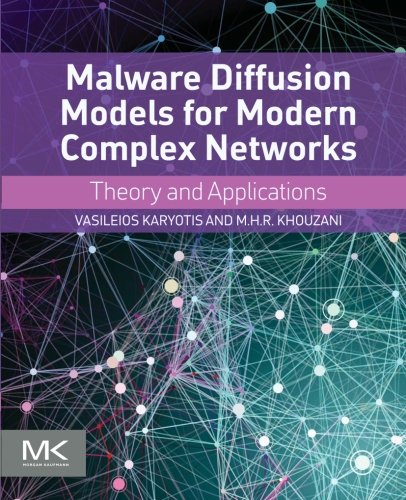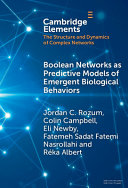Malware Diffusion Models for Wireless Complex Networks. Theory and Applications 1st Edition by Vasileios Karyotis, Khouzani 0128027141 9780128027141
$50.00 Original price was: $50.00.$25.00Current price is: $25.00.
Malware Diffusion Models for Wireless Complex Networks. Theory and Applications 1st Edition by Vasileios Karyotis, M.H.R. Khouzani – Ebook PDF Instant Download/DeliveryISBN: 0128027141, 9780128027141
Full download Malware Diffusion Models for Wireless Complex Networks. Theory and Applications 1st Edition after payment.

Product details:
ISBN-10 : 0128027141
ISBN-13 : 9780128027141
Author: Vasileios Karyotis, M.H.R. Khouzani
Malware Diffusion Models for Wireless Complex Networks: Theory and Applications provides a timely update on malicious software (malware), a serious concern for all types of network users, from laymen to experienced administrators. As the proliferation of portable devices, namely smartphones and tablets, and their increased capabilities, has propelled the intensity of malware spreading and increased its consequences in social life and the global economy, this book provides the theoretical aspect of malware dissemination, also presenting modeling approaches that describe the behavior and dynamics of malware diffusion in various types of wireless complex networks.
Sections include a systematic introduction to malware diffusion processes in computer and communications networks, an analysis of the latest state-of-the-art malware diffusion modeling frameworks, such as queuing-based techniques, calculus of variations based techniques, and game theory based techniques, also demonstrating how the methodologies can be used for modeling in more general applications and practical scenarios.
Malware Diffusion Models for Wireless Complex Networks. Theory and Applications 1st Table of contents:
Part 1. Malware diffusion modeling framework
Chapter 1. Fundamentals of complex communications networks
1.1. Introduction to Communications Networks and Malicious Software
1.2. A Brief History of Communications Networks and Malicious Software
1.3. Complex Networks and Network Science
Chapter 2. Malware diffusion in wired and wireless complex networks
2.1. Diffusion Processes and Malware Diffusion
2.2. Types of Malware Outbreaks in Complex Networks
2.3. Node Infection Models
Chapter 3. Early malware diffusion modeling methodologies
3.1. Introduction
3.2. Basic Epidemics Models
3.3. Other Epidemics Models
3.4. Miscellaneous Malware Modeling Models
3.5. Scope and Achievements of Epidemics
Part 2. State-of-the-art malware modeling frameworks
Chapter 4. Queuing-based malware diffusion modeling
4.1. Introduction
4.2. Malware Diffusion Behavior and Modeling via Queuing Techniques
4.3. Malware Diffusion Modeling in Nondynamic Networks
4.4. Malware Diffusion Modeling in Dynamic Networks with Churn
Chapter 5. Malware-propagative Markov random fields
5.1. Introduction
5.2. MRFs Background
5.3. Malware Diffusion Modeling Based on MRFs
5.4. Regular Networks
5.5. Complex Networks with Stochastic Topologies
Chapter 6. Optimal control based techniques
6.1. Introduction
6.2. Example—an Optimal Dynamic Attack: Seek and Destroy
6.3. Worm’s Optimal Control
SUMMARY
Chapter 7. Game-theoretic techniques
7.1. Introduction
7.2. System Model
7.3. Network-Malware Dynamic Game
SUMMARY
Chapter 8. Qualitative comparison
8.1. Introduction
8.2. Computational Complexity Comparison
8.3. Implementation Efficiency Comparison
8.4. Sensitivity Comparison
8.5. Practical Value Comparison
8.6. Modeling Differences
8.7. Overall Comparison
Part 3. Applications and the road ahead
Chapter 9. Applications of state-of-the-art malware modeling frameworks
9.1. Network Robustness
9.2. Dynamics of Information Dissemination
9.3. Malicious-information Propagation Modeling
Chapter 10. The road ahead
10.1. Introduction
10.2. Open Problems for Queuing-based Approaches
10.3. Open Problems for MRF-based Approaches
10.4. Optimal Control and Dynamic Game Frameworks
10.5. Open Problems for Applications of Malware Diffusion Modeling Frameworks
10.6. General Directions for Future Work
Chapter 11. Conclusions
11.1. Lessons Learned
11.2. Final Conclusions
Part 4. Appendices
Appendix A. Systems of ordinary differential equations
A.1. Initial Definitions
A.2. First-order Differential Equations
A.3. Existence and Uniqueness of a Solution
A.4. Linear Ordinary Differential Equations
A.5. Stability
Appendix B. Elements of queuing theory and queuing networks
B.1. Introduction
B.2. Basic Queuing Systems, Notation, and Little’s Law
B.3. Markovian Systems in Equilibrium
B.4. Reversibility
B.5. Queues in Tandem
B.6. Queuing Networks
Appendix C. Optimal control theory and Hamiltonians
C.1. Basic Definitions, State Equation Representations, and Basic Types of Optimal Control Problems
C.2. Calculus of Variations
C.3. Finding Trajectories that Minimize Performance Measures
C.4. Variational Approach for Optimal Control Problems
C.5. Numerical Determination of Optimal Trajectories
C.6. Relationship Between Dynamic Programming (DP) and Minimum Principle
References
People also search for Malware Diffusion Models for Wireless Complex Networks. Theory and Applications 1st:
malware diffusion model
malware diffusion
malware network
malware wifi
a malware attack
Tags: Malware Diffusion, Wireless Complex Networks, Theory, Applications, Vasileios Karyotis, Khouzani
You may also like…
Computers - Networking
Computers - Networking
Computers - Artificial Intelligence (AI)
Computers - Networking
Security in Wireless Communication Networks 1st Edition Yi Qian
Computers - Computer Science
Hidden Semi-Markov models: theory, algorithms and applications 1st Edition
Computers - Networking
Randomly Deployed Wireless Sensor Networks 1st Edition Xi Chen












